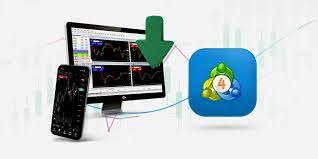
Advanced CFD Trading Strategies for Experienced Traders
For experienced traders, Contract for Difference (CFD) trading offers a high level of flexibility and the potential for significant returns. But effectively navigating the cfd trading market requires more than just a basic understanding of trading mechanisms. To truly excel, seasoned traders must employ advanced strategies that balance precision and calculated risk.
This article breaks down key strategies for traders looking to optimize their CFD trading performance.
Leverage and Risk Management
Leverage is one of the most powerful tools available in CFD trading. It allows traders to control larger positions with smaller amounts of capital. However, with great power comes great responsibility—mismanaged leverage can amplify losses just as quickly as it can boost profits.
Experienced traders rely on calculated leverage ratios based on their risk tolerance and market conditions. For instance, instead of always maxing out the leverage allowable, a seasoned trader might choose a moderate ratio to maintain a balance between potential gains and losses. Additionally, using stop-loss orders and taking-profit levels is critical to ensure risks are contained.
Hedging for Volatility
CFDs offer a unique advantage when it comes to hedging against portfolio risks. Suppose you already own a set of underlying assets exposed to significant market volatility. You can take short CFD positions on those same assets to act as a hedge.
For example, during bearish market trends, instead of liquidating your holdings at unfavorable prices, utilizing CFDs to mitigate downside exposure can help preserve portfolio value while taking advantage of the short-term volatility.
Technical Analysis and Chart Patterns
Technical analysis plays a pivotal role in any advanced CFD trading strategy. By studying historical price data, experienced traders identify trends, key support and resistance levels, and potential breakout points. Popular tools include Relative Strength Index (RSI), Moving Averages (MA), and Fibonacci Retracement analyses.
Seasoned traders also recognize and act on essential chart patterns like pennants, head-and-shoulders formations, and flags. These patterns often serve as predictive indicators, helping traders make informed entry and exit decisions with precision timing.
Trading the News
Market-moving events, such as geopolitical developments or economic reports, often cause rapid price changes. Experienced CFD traders keep a close eye on news feeds and economic calendars to anticipate potential volatility.
For instance, during an interest rate announcement by a central bank, the currency market can experience sharp movements. Traders use CFD positions to capitalize on these short-term shifts, often deploying both stop and limit orders to lock in gains while avoiding unpredictably large losses.
Final Thoughts
Advanced CFD trading requires a blend of technical acumen, market awareness, and disciplined execution. For experienced traders ready to level up their game, mastering these strategies can open pathways to scalable returns while mitigating unnecessary risks.